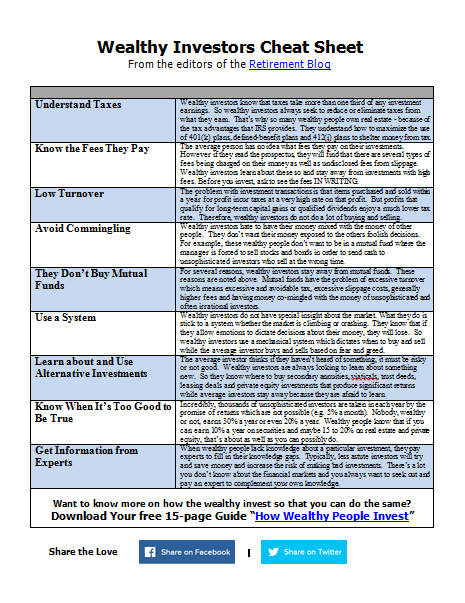As an investor, there are several different types of risk you need to manage. As a senior your understanding of the different types of risk that investments can carry, and what risks the investments in your portfolio present, can mean the difference between having enough money in the latter years of retirement, or falling short at a time when there is no opportunity to recover.
Your first priority should be to manage the risks that apply to your overall financial security. In order to build a strong foundation for a lifelong financial plan, it is important to be sure you have the appropriate safety net in place. Selecting investments without first securing the proper protections can leave you extremely vulnerable to life's catastrophes be it an extended illness, liability claim or even death. Will you have adequate resources for a Medicare supplement? Will you need long-term care insurance or self-insure? Do you need life insurance protection to insure your spouse’s economic security if you pass first? The types of protection you need and how much is a highly individualized matter.
Once you have a handle on your primary financial risks, then you will need to choose investments that represent the appropriate level of investment risk to meet your objectives. Your investments must not only provide enough current income to meet your needs, but must provide enough growth to allow for the impact inflation will have on your income needs, as well as additional needs you may have as you grow older such as higher uninsured medical costs; help you may need to manage at home, like a gardener, housekeeper, or home health aide; and other, as yet, unforeseen costs.
Investment risk is defined as "The chance of loss on an investment due to many factors including, market conditions, the economy, inflation, interest rates, default, politics, foreign exchange, call provisions, etc.". Most of us are quick to admit we don't want to lose our money, but there are different types of risks and understanding those risks, and how they impact your money, is key to selecting the right investments and insurance products for your needs and goals.
Safety can be viewed from two distinctive views. Do you want safety of principal or safety of purchasing power? All investments carry at least one type of risk. Here are the primary risks an investment may carry:
1. Inflation Risk. This is the risk that although your money has grown in value, it hasn't grown enough to keep up with inflation. This means that your money will not have the purchasing power it originally had. Inflation typically runs between 3-6 percent a year, so low return investments run a genuine risk of losing ground after you pay taxes on your gains. Keep in mind that if inflation only grows at 3 percent a year, your income needs will double in 20 years.
2. Financial Risk. This is the risk that the issuer of the investment may run into financial difficulties and not live up to their promise or expectations. For example, the company’s products may not achieve sales goals, or the firm could run out of money.
3. Market Risk. This is the risk of price fluctuations in the securities market. Stock and bond prices do fluctuate and market conditions, or public sentiment, may not reflect the true value of the company. Even excellent, stable stocks can be subject to overall market risk.
4. Reinvestment Risk. This is the risk that when it becomes time to reinvest, you may not be able to get as high a return on your money. This could mean that you have to reinvest at a lower rate of return, or take on additional risk to achieve the same level of return that you want.
5. Interest rate risk. In general, when interest rates rise, the prices of existing securities drop. This occurs to bonds because new bonds will be issued at a higher rate and so the market value of older bonds, at a lower coupon, drops so that yield will be similar. Stocks can drop due to interest hikes because when interest rates are higher, many investors will shift their money from stocks to lower-risk fixed investments.
In summary, an understanding of the risks involved in investing can help you better understand and select from the myriad of investment options open to you. As a retired person, it is critical to balance the need for safety of principal, with the need for long-term growth. One of the best ways you can provide for both is to be sure your portfolio includes different types of investment products that are not all subject to the same risks. A discussion with your retirement consultant and a good solid plan is your best defense.

Leave a Reply